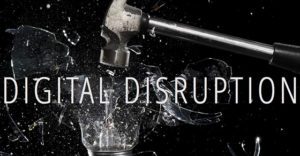Schneider Electric recently produced a video with Ted Schadler, a VP at Forrester Research, on the topic of digital disruption that provides some good food for thought for most any company around how to make better use of the technology now at our collective disposal.
Another pair of Forrester analysts, James McQuivey and Josh Bernoff, literally wrote the book on digital disruption, a 2013 tome called Digital Disruption: Unleashing the Next Wave of Innovation. Schadler, along with Bernoff, has also penned a couple of books on similar topics, including, Empowered: Unleash Your Employees, Energize Your Customers, and Transform Your Business.
The point is, these Forrester guys know a little something about the topic. In the short video, Schadler offers up an explanation of what digital disruption is and a few examples of how companies can use it to their benefit.
In a nutshell, he says digital disruption refers to technologies that change the way we do things, sometimes radically so. Current examples of such technologies include cloud computing, mobile devices and applications, analytics and big data. Such technologies allow companies to do old things in new ways or, more importantly, to do entirely new things. “That’s where digital disruption hits its stride,” Schadler says in the video.
The trick is to figure out how to get value out of these technologies. Opportunities exist in three main areas, he says. First is service delivery, such as arming field service people with mobile technologies that make them more efficient. Second is the ability to automate a service and remotely manage or deliver it. Third is to improve products, such as by taking inherently offline products and turning them into smart, connected products.
In the video Schadler gives a few examples of each type of digital disruption. In terms of service delivery, for instance, maybe it’s the folks who install satellites in consumer homes for TV and Internet service. If the field technician has a mobile device that includes all the information needed to install a set-top box and find a good line of sight to the satellite, there’s a better chance he can complete the job on the first try.
Connected products plays into the whole smart city and smart building concept that we’ve written about many times on this blog, such as this post on the ambitious Microsoft CityNext program.
This whole idea of digital disruption is really nothing new. For decades companies have been trying to figure out how to apply IT in ways that give them a competitive edge. In essence, that’s the same thing as digital disruption, at least in my view.
What has changed, and dramatically so, are the tools at our disposal to gain that edge. Schrader certainly hits on some of them when he mentions cloud computing, mobile devices, big data and analytics. What’s more, we now have the ability to instrument just about anything with a sensor or other device that can send data about the device to some faraway application or database. We’re only now beginning to find ways to make use of such capabilities. Smart city technology is one example, as Schneider Electric’s Alistair Pim outlines in this post.
Check out the Schrader video and see if you can think of ways to bring some digital disruption, or whatever you want to call it, to your industry.



